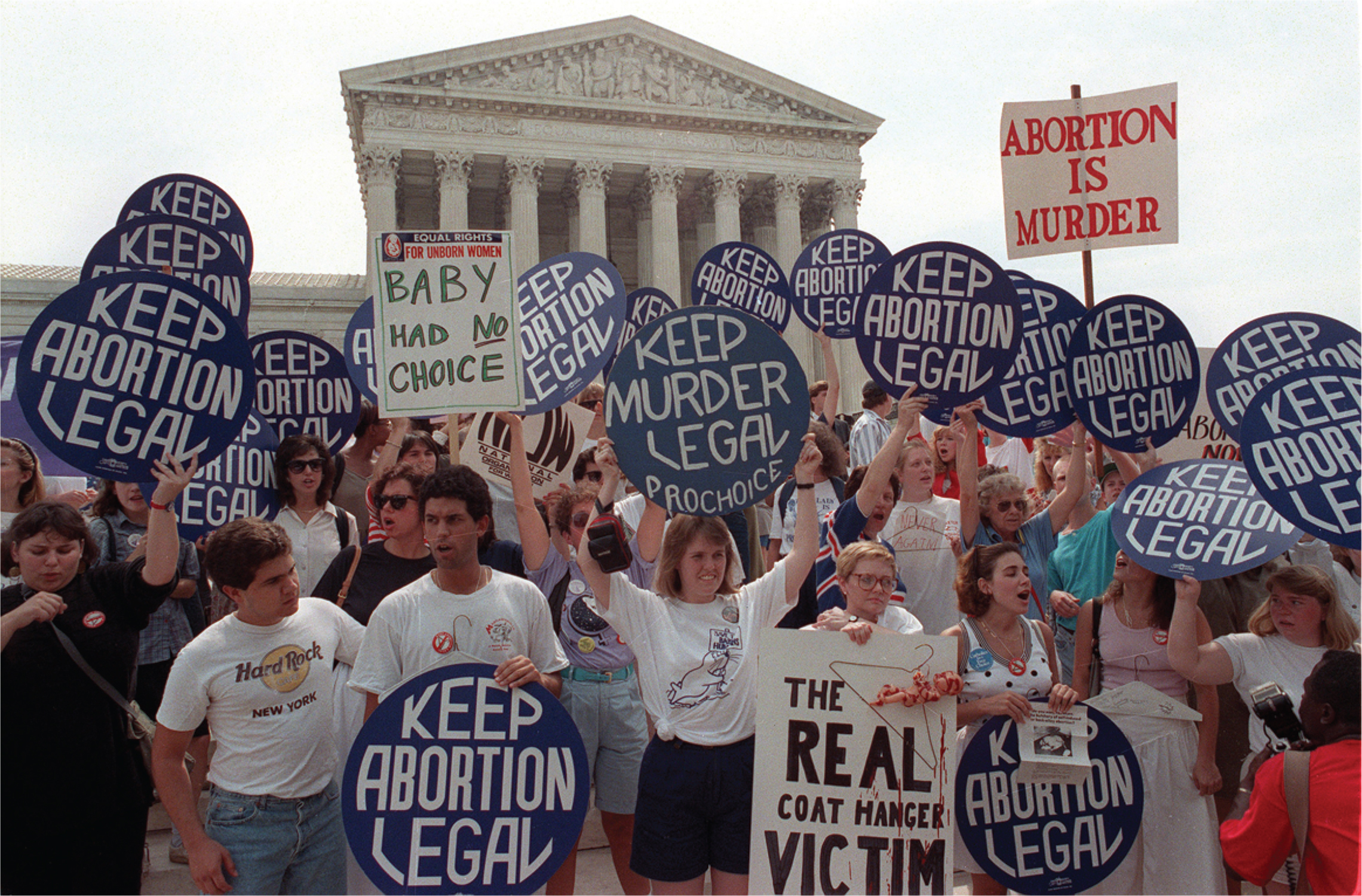The American Promise:
Printed Page 876
The American Promise Value
Edition: Printed Page 812
Chapter Chronology
Feminism on the Defensive

The Fight for the Equal Rights Amendment
A signal achievement of the New Right was capturing the Republican Party’s position on women’s rights. For the first time in its history, the party took an explicitly antifeminist tone, opposing both the Equal Rights Amendment (ERA) and abortion rights, key goals of women’s rights activists. When the time limit for ratification of the ERA ran out in 1982, Phyllis Schlafly and her followers celebrated the defeat of a central feminist objective. (See “Historical Question.”)
Cast on the defensive, feminists focused more on women’s economic and family problems, where they found some common ground with the Reagan administration. The Child Support Enforcement Amendments Act helped single and divorced mothers collect court-ordered child support payments from absent fathers. The Retirement Equity Act of 1984 benefited divorced and older women by strengthening their claims to their husbands’ pensions and enabling women to qualify more easily for private retirement pensions.
The Reagan administration had its own concerns about women, specifically about the gender gap in voting—women’s tendency to support liberal and Democratic candidates in larger numbers than men did. Reagan appointed three women to cabinet posts and, in 1981, selected the first woman, Sandra Day O’Connor, a moderate conservative, for the Supreme Court, despite the Christian Right’s objection to her support of abortion. But these actions accompanied a general decline in the number of women and minorities in high-level government positions. And with higher poverty rates than men, women suffered most from Reagan’s cuts in social programs.
Although Supreme Court decisions allowed increasing restrictions on women’s ability to obtain abortions, feminists fought successfully to retain the basic principles of Roe v. Wade. Moreover, they won a key decision from the Supreme Court ruling that sexual harassment in the workplace constituted sex discrimination. Feminists also made some gains at the state level on such issues as pay equity, rape, and domestic violence.

VISUAL ACTIVITY The Abortion Debate After the Roe v. Wade decision in 1973, several states enacted restrictions on abortion. In 1989, the Supreme Court upheld a Missouri law prohibiting public employees from performing abortions except to save a woman’s life. It also banned abortions in public buildings and required physicians to perform viability tests on the fetus after twenty weeks. Here, activists on both sides rally before the Supreme Court. AP Photo/Ron Edmonds. READING THE IMAGE: What arguments do the signs of the abortion opponents make? CONNECTIONS: How did other elements of the feminist agenda fare in the 1980s?

